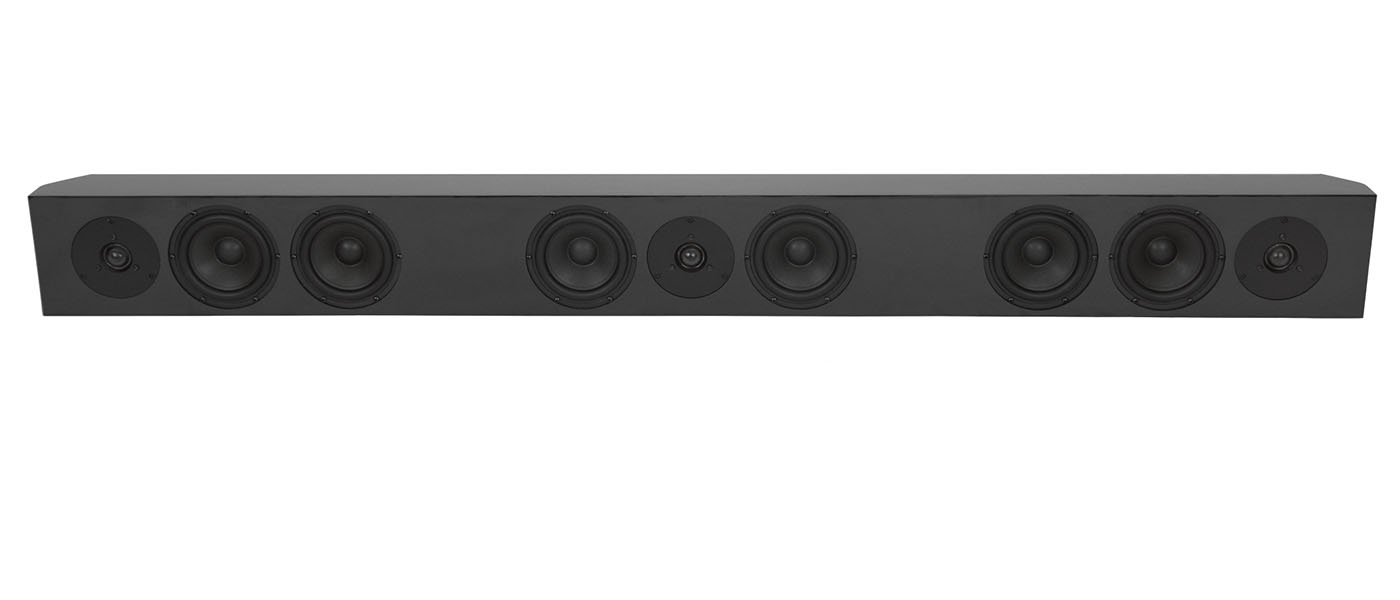With performance to well below 15Hz in my room, and with smooth blending with the satellite speakers, the Power Sound Audio S3601’s performance is almost impossible to conceive of until you’ve actually heard it.
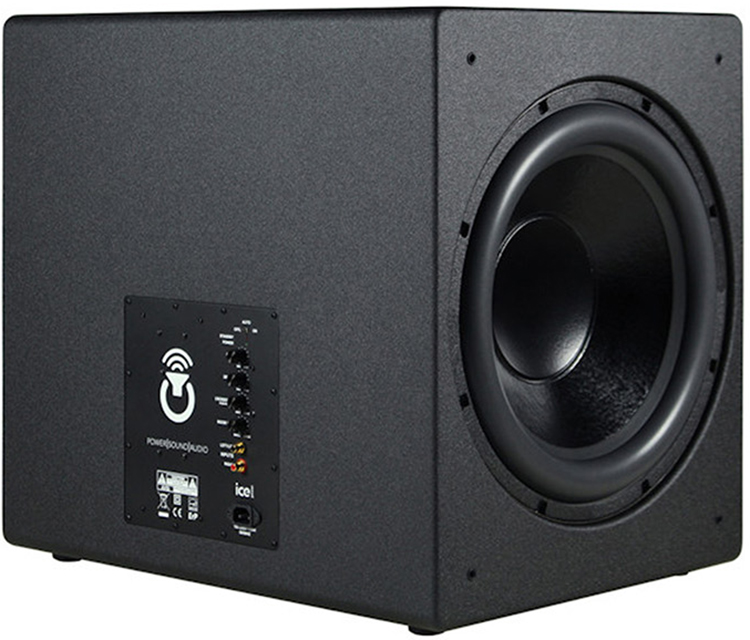
Power Sound Audio S3601 Subwoofer
- The Power Sound Audio S3601 Subwoofer has the most inert cabinet I’ve encountered
- ICE plate amplifier has more than sufficient power to energize even large rooms
- Dual 18” drivers provide low distortion bass with excellent pitch control
- A Room-Size control knob allows the subwoofer to work in a wide variety of room sizes
- DSPeaker room equalization is available from Power Sound Audio
- Remote-controlled trim is not offered
The Power Sound Audio S3601 subwoofer is primarily for those who want to not just hear the bass but also feel it. I’ve owned a multitude of subwoofers over the years, including this new Power Sound Audio S3601, and the majority were just fine down to 25Hz or so. But very, very few subs have had the ability to offer honest output below that frequency. The few that could (with one exception) actually doubled the frequency and that was with high distortion.
Dual 18” drivers:
With 1.75” surrounds for greater excursion
CNC (Computer Numerical Control):
Machining on the subwoofer cabinet that is also heavily-braced
Assembled:
In Ohio
1700-watt continuous-power (4300 watt-peak) :
Class D, ICE amplifier with Digital Signal Processing control
137 pounds of subwoofer weight:
With a sealed-box configuration
Dimensions:
20 x 28 x 24 inches (D, W, H respectively), including grills
A 5-year warranty:
Against manufacturing defects and workmanship issues
Price:
$1,999.99
Company:
SECRETS Tags:
2017, subwoofer reviews, Power Sound S3601, Sealed box, subsonic, Subwoofer Reviews 2017
The Power Sound Audio company of Mineral Ridge, Ohio is owned and operated by bass fanatics Tom Vodhanel and Jim Farina. For the past six years, their Internet-only company has grown mostly by word-of-mouth. Although they offer a wide variety of subwoofers (and other equipment), the subject of this review, their Power Sound Audio S3601, is near the pinnacle of products offered.
- Tekton Design Pendragon Tower Speakers
- Legacy Audio Introduces Foundation Subwoofer
- Revel by HARMAN Introduces Compact, High-Performance Subwoofer/Satellite Audio Systems at CES 2017
The Power Sound Audio S3601 is a sealed-box design with dual 18” drivers mounted on opposite sides of the enclosure for vibration control. Like most modern subwoofers, the unit is self-powered with its own plate amplifier.
So why would anyone WANT a subwoofer at all, much less a monster like the Power Sound S3601? My reasons were as follows:
Although speaker manufacturers are increasingly adding powered subwoofers to their tower speakers, the location where speakers image best is rarely if ever the location where the subwoofer should be. Having full-range speakers in their optimal imaging position often results in boomy bass that not even electronic room correction can repair.
Secrets Sponsor
Having a subwoofer placed in a location that sounds best and excites the fewest room resonances almost always results in cleaner, tighter, and deeper bass. In most rooms, this location may vary from “away from the corner” to “out in the room.” But my room is unusual in having all four corners vented to other areas of the house. This allows me to place the Power Sound Audio S3601 close to the corner where it seems to perform best.
Removing the requirements of excessive bass excursion from the main speakers virtually always results in less distortion and greater detail. This is NOT a trivial advantage. In many cases, it’s like getting a new (and much more expensive) pair of speakers for free. Offloading bass demands to a self-powered subwoofer also reduces the stress on your main speakers’ amplifier.
Now all this said, if your sole use of a subwoofer is for movie explosions and pop music, you may never appreciate how good this one is. And make no mistake, this is a very good subwoofer.
The Power Sound Audio S3601 uses a sealed box design. In such subwoofers, the bass rolls off more gradually and, unlike ported models, equalization can be applied within reason without the potential of damaging the driver through excessive excursion. In a sealed-box design, the air inside the box acts as a spring to prevent the actual speaker coil from bottoming out on its suspension.
Vented or ported subwoofers, in contrast, use the resonance of their box to add some volume at the lower end of their response. Clever designers often engineer the cabinet to provide a peak in bass response close to the port tuning frequency. This can provide the impression of more bass, but the frequency response then drops abruptly below the port tuning frequency. The phase of the bass output also varies wildly at and below the port tuning frequency. One rarely gets truly low bass from a ported design.
The anechoic frequency response of sealed subwoofers usually extends slightly deeper than ported designs. Sealed boxes also typically provide less distortion, better phase behavior, and no frequency response peak at port resonance. The Power Sound Audio S3601 is a prime example of these advantages.
This is NOT a component that you’d want to move or unbox by yourself, unless you had to. The Power Sound Audio S3601 alone weighs 137 pounds, and with the box and packing, it is both bulky and heavy. That said, a single person (of my size and musculature) can unload and unpack the subwoofer provided you use good lifting technique and unload on a carpet by upending the sub carefully. And although I lift weights and exercise daily, I still had some soreness for a few days after unloading this one. Get some help with unloading if possible.
Secrets Sponsor
The sub has rubber feet on the bottom, and since the drivers are on the “sides” of the box, there is no bottom-clearance issue as there can be with downward-firing subs on heavy carpet.
My (immediately) previous subwoofers were Power Sound Audio XV-15s, themselves most excellent performers. But being ported, they lacked the lower frequency response that this sealed-box S3601 provides. For 99% of movies and music, the XV-15s were not only adequate, but actually quite impressive. Their only shortcoming was with true sub-sonic (below 20Hz) program from pipe organs, electronic synthesizers, and organic sounds such as thunder.
Power Sound Audio is generous enough to provide a trade-in program, and I availed myself of it to return my two XV-15s toward the Power Sound Audio S3601 purchase. I know of no other subwoofer companies off the top of my head that offer such a trade-in option. I commend Power Sound for being customer-oriented enough to allow trade-ins.
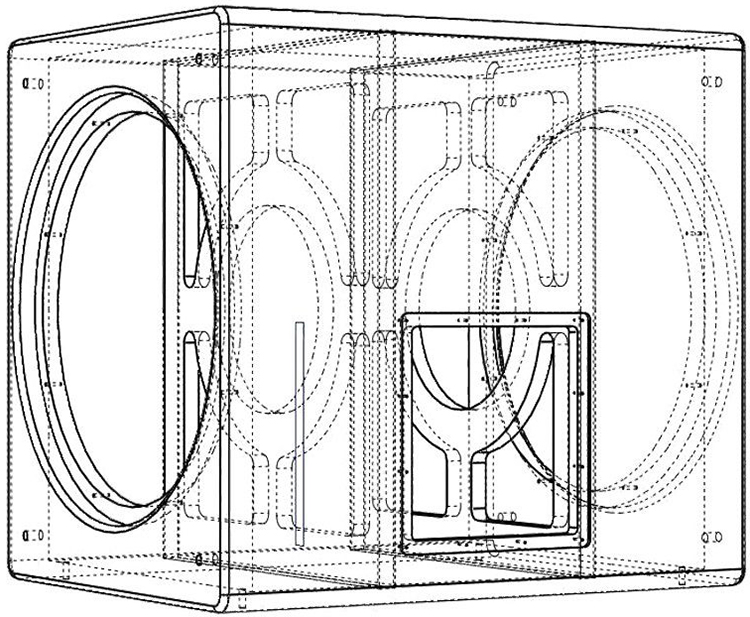
I must also comment on the reliability and robust construction of the Power Sound Audio S3601. This is the most inert subwoofer cabinet that I’ve encountered. Its weight is indicative of extensive internal bracing. Although the crinkle-black finish isn’t too high on the interior decorating scale, keep in mind that it would be simple to paint in more room-friendly colors.
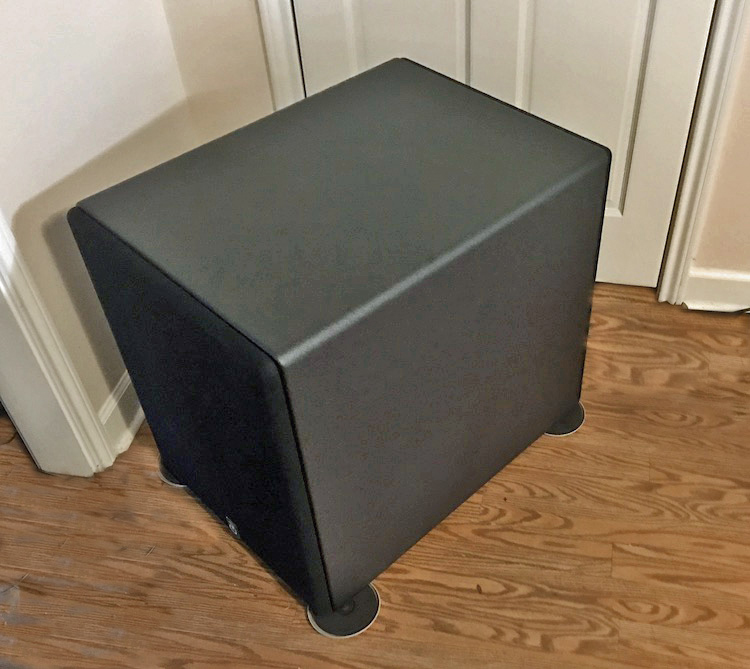
ASSOCIATED EQUIPMENT:
MacBook Pro running jRiver Media Center 21 software
OPPO UDP-205 used as a CD and video-disc player and occasionally as a DAC
Emotiva XDC-1 DAC
AudioQuest Dragonfly Red DAC
Emotiva USP-1 preamplifier
Emotiva BasX A-300 solid-state stereo amplifier
Emotiva UPA-2 solid-state stereo amplifier
Emotiva UPA-1 mono block solid-state amplifiers
Vacuum Tube Audio M125 mono block tube amplifiers
Heathkit 12-watt custom-modified mono block tube amplifiers
Tekton Pendragon loudspeakers
The S3601 surprised me in ways that my previous subwoofers had not. It seemed to have unlimited deep bass extension in my room, and that was BEFORE I boosted the bass by 4dB at 15Hz with my parametric equalizer! Having such a deep-sounding underpinning makes almost ALL music sound significantly more real. Even on pieces that lack deep bass content, the presence of the subwoofer gave the music greater dynamics.
I used the subwoofer in two different configurations. With electronic bass-management available, I rolled off the main satellite speakers at 70Hz using a 24dB per octave Linkwitz-Riley high-pass filter. The sub was rolled in using an identical low-pass filter. The results of this were significant. The main speakers (Tekton Pendragons), now relieved from the burden of handling deep bass, became more lively, more dynamic, and seemed to have significantly more midrange detail. The transition between the sub and the speakers was completely inaudible.
Having achieved success, I (as usual) couldn’t leave well-enough alone, so I tried running the Pendragon speakers full range and using the subwoofer’s plate amp controls to attempt an equivalent sub/satellite mix. Initially, my efforts were unsuccessful due to a +5dB peak in the Pendragon’s response at the 35-40Hz port frequency (the crossover sounded boomy). But I then stuffed the Pendragon’s ports with some socks, to reduce their contribution to the bass sound. This attenuated the speakers’ bass peak sufficiently that I could achieve a blend with the subwoofer.
All the benefits that the Pendragons received from active bass management stayed with the “full-range blend” method. The speakers sounded significantly more dynamic, with greater detail and coherence. With the speakers being fed a full-range signal (and their ports restricted), the subwoofer’s settings became far more critical. The smallest change in subwoofer amplitude, delay (phase), or crossover frequency made huge differences in the sound.
In my 3500 cubic-foot listening room, I set the subwoofer’s room adjustment to Large to achieve maximum low bass. Despite this, the bass remained both clear and punchy with very good pitch definition. Exactly the things that a good subwoofer SHOULD provide!
And this is a good time to mention the Power Sound Audio S3601’s controls, they vary slightly from industry conventions. From top to bottom, the subwoofer’s plate amplifier offers:
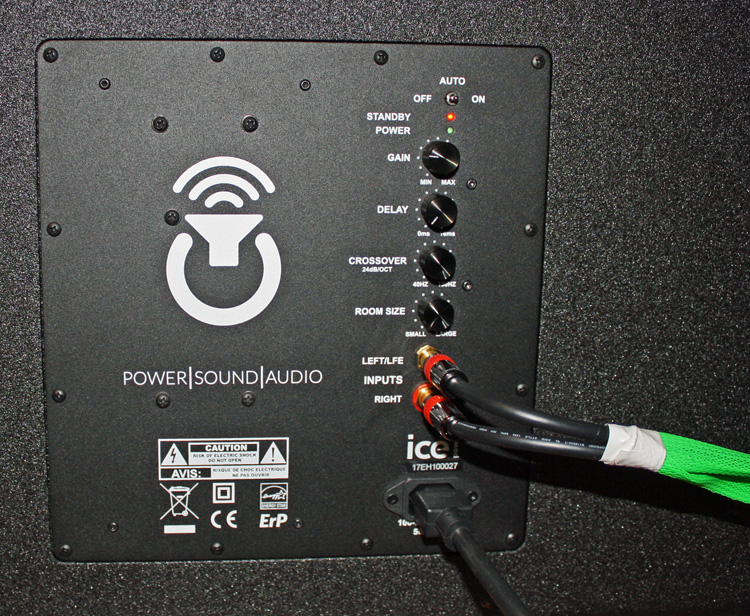
Power switch – Positions: Off/Auto/On – Auto turns the sub on or off depending on whether a signal is present at the inputs.
Gain – This knob adjusts the subwoofer volume independently of the satellite speaker volume.
Delay – This knob is normally labeled “Phase” on other subwoofers I’ve seen, but it serves the same function. At zero, the subwoofer is in phase with the satellite speakers (assuming the satellite speaker amplifier is non-inverting). At 12 milliseconds (maximum delay), the subwoofer is 180 degrees out of phase with a 40Hz signal.
Crossover frequency – The sub low-pass can be set anywhere from 40 to 150Hz – all at a slope of approximately 24dB/octave. Note that at the 150Hz end of the range, the high-pass filter is effectively bypassed.
Room size – This is another control that was new to me. In its Large position, the subwoofer is undamped and allowed its maximum bass extension. As the knob is turned toward the Small position, the subwoofer is progressively restricted in its lowest frequencies, and the damping is increased. This allows the subwoofer to be matched to the room for tighter bass.
Input jacks – Two RCA jacks are available (mono bass effects only with the top jack alone, or stereo right/left with both jacks used). Note that the subwoofer’s gain is virtually doubled if both jacks are used. So even if you’re running a monophonic bass effects channel from your processor, using a RCA-splitter to power both of the subwoofer’s input jacks will provide more bass volume for the same input-signal voltage.
To test the capabilities of the Power Sound Audio S3610, a variety of program material was used. In all listening cases below, the Emotiva USP-1 preamplifier was used as a bass-management device. For test listening, all crossovers (both low and high-pass) were set to approximately 100Hz.
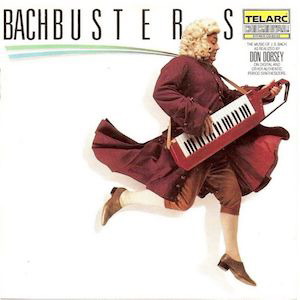
First, the Don Dorsey classic “Bachbusters” was tried. This CD has solid 16Hz content at high volumes. A subwoofer should be able to produce bass that is not only heard, but also felt in the diaphragm.
Without any equalization, the hoped-for visceral effects were reduced in amplitude by the natural roll-off of the box sufficiently that there was not much diaphragm effect. But with a 4dB boost at 15Hz (inserted via the jRiver digital signal processing suite), the pedal tones were there in their glory. Remembering that every small equalization boost requires significantly more power from the amplifier, I wouldn’t recommend boosting the bass much more than 4dB, but that bump makes the subwoofer sit up and take notice!

The track “Way Way Down Deep” from the Jennifer Warnes CD, “The Hunter” is also a fine test track for evaluating bass pitch-definition.
With both drums and low-frequency electric bass guitar, the sub should allow one to hear clear differences between drum strokes and guitar notes. With the Power Sound S3601 in the system, the differences are clear.
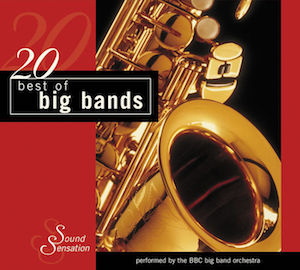
The BBC band’s version of “Sing, Sing, Sing” is a classic that presents drums and brass in a well-recorded venue and with excellent musicianship.
Once again, the drums and low brass should be clear, pitch-perfect, and not blend into each other. This recording basically begs to be listened to at louder levels and the sub should not distort or smear despite the volumes. The Power Sound S3601 maintains composure even when the music becomes very loud AND very dense.

The Lady Gaga cut “Dance In The Dark” is one of the toughest for any sub to survive.
The intro teases the listener into increasing the volume, and then when the bass drum underpinning beat comes in (drum with some synth augmentation, sounds to me), the sound can turn to either a loud roar or undifferentiated mush. The Power Sound S3601 can avoid both of these shortcomings, but to do so, the subwoofer-to-satellite relative volumes must be VERY carefully matched. Too little sub volume? The song sounds emasculated. Too much sub volume (even a little) and you’ll be rushing to turn the volume down as quickly as possible. But get the match just right, and the song sounds apocalyptic (as intended) with a clear and potent bass underpinning.
The following measurements were taken one meter from the subwoofer using a calibrated UMIK microphone and FuzzMeasure software for Mac:
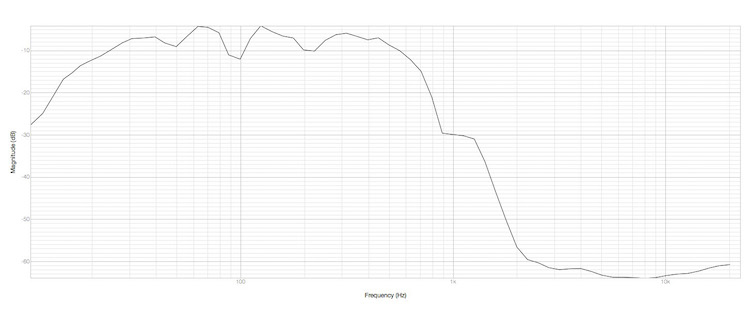
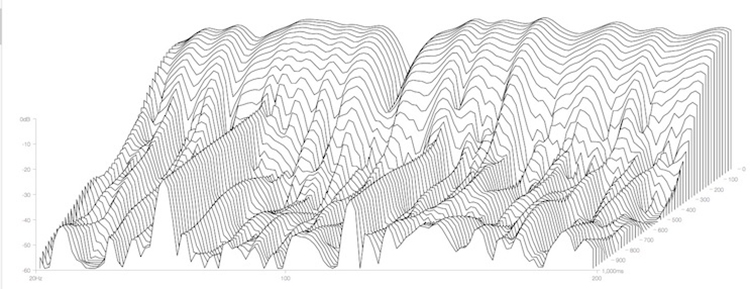
These measurements were taken at a height that centered the microphone to the subwoofer’s drivers. The frequency response curve shows a generally flat and broad response. This means that there will be no “one note boom” from this subwoofer, as so many inexpensive HT subs are prone to deliver.
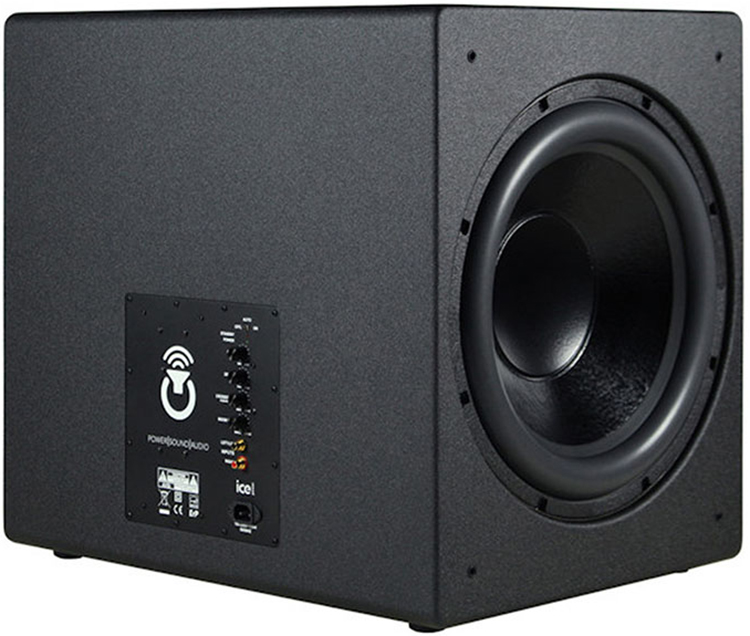
I consider THE POWER SOUND AUDIO S3601 one of the best quality and most versatile subwoofers that I’ve ever encountered. VERY highly recommended!
- Better low bass response than the vast majority of subwoofers on the market
- Better phase performance than ALL the ported subwoofers on the market
- Extremely solid and acoustically-inert construction
- Strong ICE amplifier performance with more than sufficient power
- Room-size control to optimize the subwoofer to any sized listening room
- Remote volume control for in-seat volume-matching adjustments
- XLR input for associated equipment that has XLR sub outputs
- Choice of spikes or rubber feet to work better on thick carpet
- Slightly larger cabinet for lower bass response without equalization
Despite the unusual nomenclature of the back-panel controls, the Power Sound Audio S3610 is a world-class subwoofer. It provides two significant virtues that most vented subwoofers just can’t, uncompromised phase response that doesn’t muddy the bass, and a slower roll-off of ultra-low frequency material.
The ICE amplifier panel has more than sufficient power to tolerate some bass equalization without overloading, and the dual 18”-diameter drivers allow for a huge acoustic output with very low cone-movement and equally low distortion.
All I can say is that if you’ve never heard a really good sealed-box subwoofer, you owe it to yourself to do so. Even if you opt for a smaller sub than this one, the sealed-box technology is too good to ignore. Power Sound Audio also makes:
- a dual-driver 15” subwoofer (the S3000i)
- a single-driver, sealed-box 18” subwoofer (the S1801)
- a slngle-driver, sealed-box 15” subwoofer (the S1500)
- a larger-cabinet, single-driver, downward-firing sealed-box 15” model (the 15S)
They also make an industrial model with four 18” drivers (the S7201), but for home use, the S3601, under review here, is about the largest box that I’d want in my room.
Keep in mind that if you (as I) are planning to move in the future to a potentially smaller room, that the PSA S3601 has the futureproofing feature of the room size control. With that adjustment, one can tune the sub to optimal performance in just about any environment. In fact, with that room-size control pot, I consider the Power Sound Audio S3601 the most versatile subwoofer that I’ve ever come in contact with.


